
The history of the railway line
On 25 April 1868, la Compagnie du Chemin de Fer de la Seudre [the Seudre Railway Company] was founded. It would take many years of negotiating, research, fundraising and even a war (1870-71) before the line became operational on 28 August 1875. Back then, it took 1 hour 45 minutes to travel between Pons and Royan. On 8 April 1876, the line between Saujon and La Tremblade was completed. Following the completion of the stations, the first train was able to depart on 25 June at 10.20 and the line was open!
Le Train des Mouettes, time travel at its finest!
This is the last and only departmental line maintained in Charente-Maritime. It is thanks to the joint efforts of the Departement, who own the line, and the association of volunteers “Trains & Traction”, who run the trains, that we have been able to keep the line alive. In doing so, we have been able to bring the Charentais-maritime heritage to life and share it with visitors in our living museum.
It’s hard to imagine that in 1890, people travelled on earthen tracks, either on foot, by bike or on horseback – all at walking pace (around 5kn/h) The railway’s arrival brought with it great advances, making it possible to travel at 35km/h and to carry heavy loads (each wagon can carry between 3 and 10 times the amount carried by an ox cart).
The new method of transport led to an economic resurgence in the area by allowing oysters to be delivered further and faster. It also allowed wood from the Coubre forest and salt from the Marennes-Oleron basin to be transported further afield. In fact in brought a boost for the whole peninsula.
Today, the line, which was closed in 1980 by SNCF, welcomes you on board between Saujon and La Tremblade once more. The route runs for 21 kms and passes through 69 level crossings. After leaving Saujon station, you will pass through 6 stations: Fontbedeau, where the train does not stop, Mornac Sur Seudre (5 minute stop) where passengers can get on or off Chaillevette (5 minute stop), Arvert, and Étaules (the train does not stop at these 2 stations). The final stop is La Tremblade.






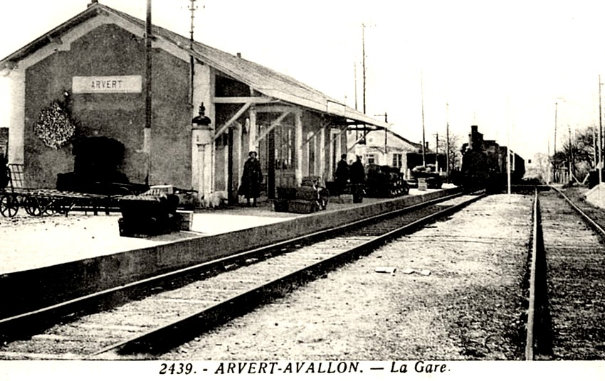
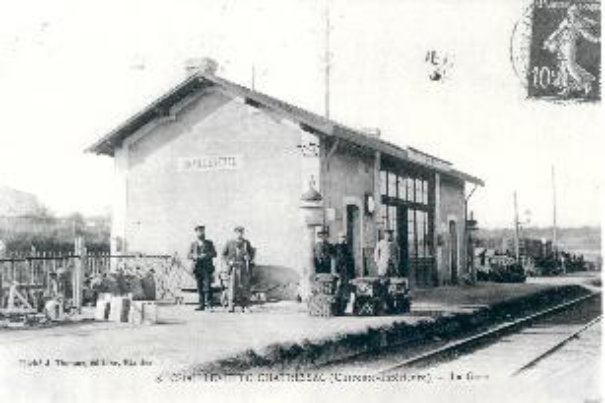
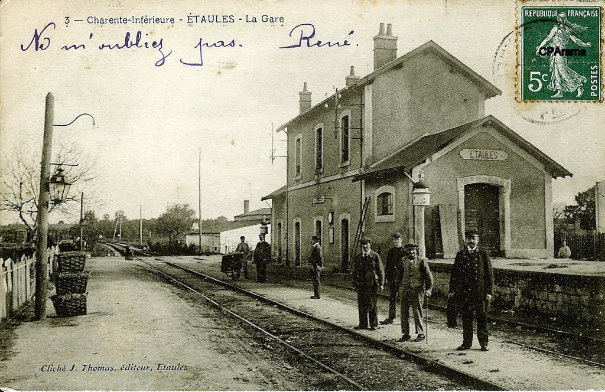

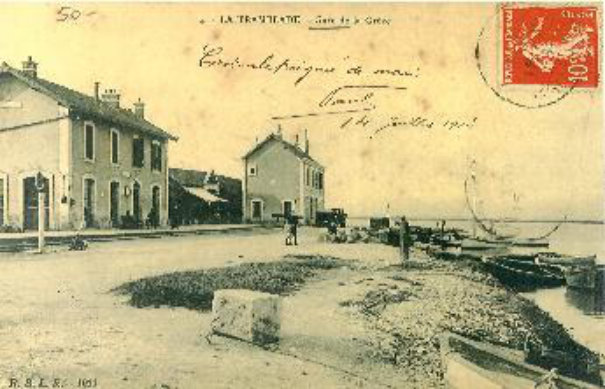
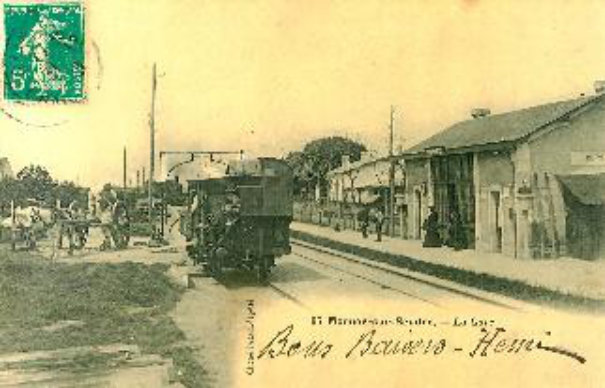

Saujon: a tourist and spa town
With the Seudre river flowing right through its heart, Saujon has close links to the water. Ribérou harbour, once a trading port, and now home to many fishing and pleasure boats, has lost none of its old world charm. A series of sea locks separate the fresh and sea water. Follow the paths along the banks of the Seudre to catch a glimpse of the “carrelets” (fishing huts on stilts).
Saujon is also a renowned spa town. Since the first thermal spa was opened in 1860, the variety of treatments on offer has not stopped growing and the town’s spa centre now offers everything from residential programmes to relaxing spa days and beauty treatments.
Whatever the season, the Seudre valley is the perfect place for a walk. Whether you are a fitness fanatic or a nature lover you will find a walk that’s right for you. Just follow one of the signposted trails, which weave through vineyards, valleys and woods. Don’t miss out on the chance to see remains of the old Saujon Priory which are preserved in Saint-Jean-Baptiste church.
Mornac-sur-Seudre :One of “France’s most beautiful villages”
Wander through the cobbled streets in Mornac-sur-Seudre, one of Charente-Maritime’s historic villages. An old fishing and trading port situated on the banks of the Seudre river, the town has retained its character. You will be enchanted by its delightful architecture: the medieval covered market, the Romanesque church, the traditional white houses and the brightly painted huts. Roam through the alleyways full of flowers and let yourself be tempted by the small boutiques selling the works of local artists. For those who would like to explore a little further, the 5km Taillées Piétonnes trail leads you on a pleasant walk through natural surroundings.
Why not go down to the harbour and head towards the heart of the salt marshes? Whether you choose to go by kayak or paddleboard or take one of the boat trips on offer, you will find a new world just waiting to be discovered. Keep a look out for the egrets – they’re watching you!
Chaillevette: the oyster nursery
The charming village of Chaillevette has long been known for its two harbours – Chatressac and Chaillevette. This is the place to come if you would like to try oysters fresh from the producers’ huts as oyster production is the main activity here.
At Chatressac harbour, you can hire a kayak and explore the marshes at your own pace. Or you could take the opportunity to see how shellfish are farmed, taking time to appreciate the bright colours of the authentic oyster producers’ huts. You could also spend some time on the waterside admiring the flat-bottomed boats as they come and go or watching the oyster farmers at work in the oyster beds.
In the village centre, the original station from where the oyster trains left has been preserved. This modest station continues its links with the railway as it is now the nerve centre of the Train des Mouettes.
La Tremblade: a real Charentais village
As soon as you arrive, you’ll fall for the charms of the oyster-producing harbour of La Grève and its typical multi-coloured huts. Why not stop for a while to try the Marennes-Oléron oysters? In summer, there are plenty of things on offer to keep you entertained: traditional boats, oyster opening contests, enormous feasts of mussels and firework displays to name but a few. On Saturday morning, you can wander around the traditional market. The fish market, which takes place in the covered marketplace, is a real treat for the senses!.
Discover the wild coast, with vast sandy beaches and ocean as far as you can see. The waves make it a paradise for all lovers of surf: it’s the perfect spot for surfing, bodyboarding and kitesurfing. Or why not enjoy an invigorating swim? If you’re looking for a quieter beach, head to Mus de Loup, la Cèpe or Galon d’Or, perfect for families to take a dip in the sea. Just a short bike ride away from the Train des Mouettes, you will find Ronce-les-bains well worth a visit.
If you are a nature-lover, La Coubre forest is the perfect place for you. Whether you want to explore on foot, by bike or on horseback, there are plenty of signposted trails leading through this well-preserved natural environment. TheVélodyssée, a cycle path leading through the pine trees, opens up the possibility of several splendid cycle rides along the Atlantic coast.